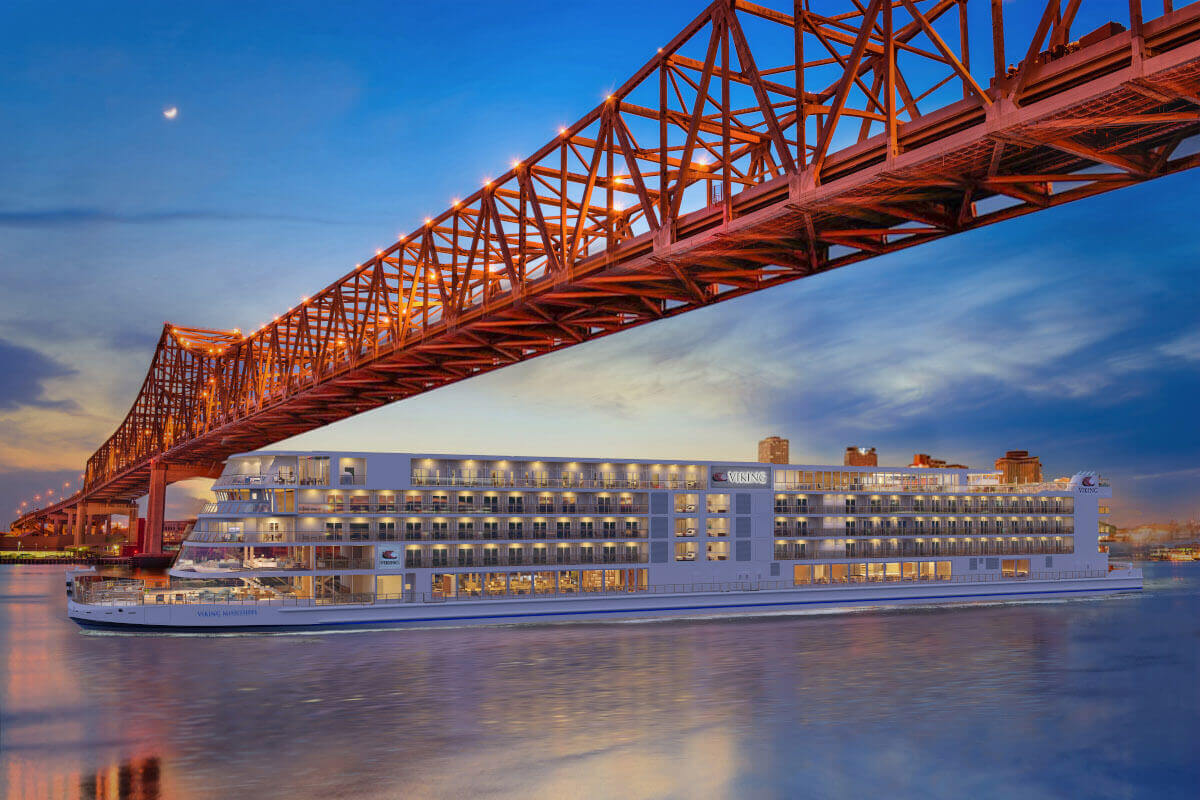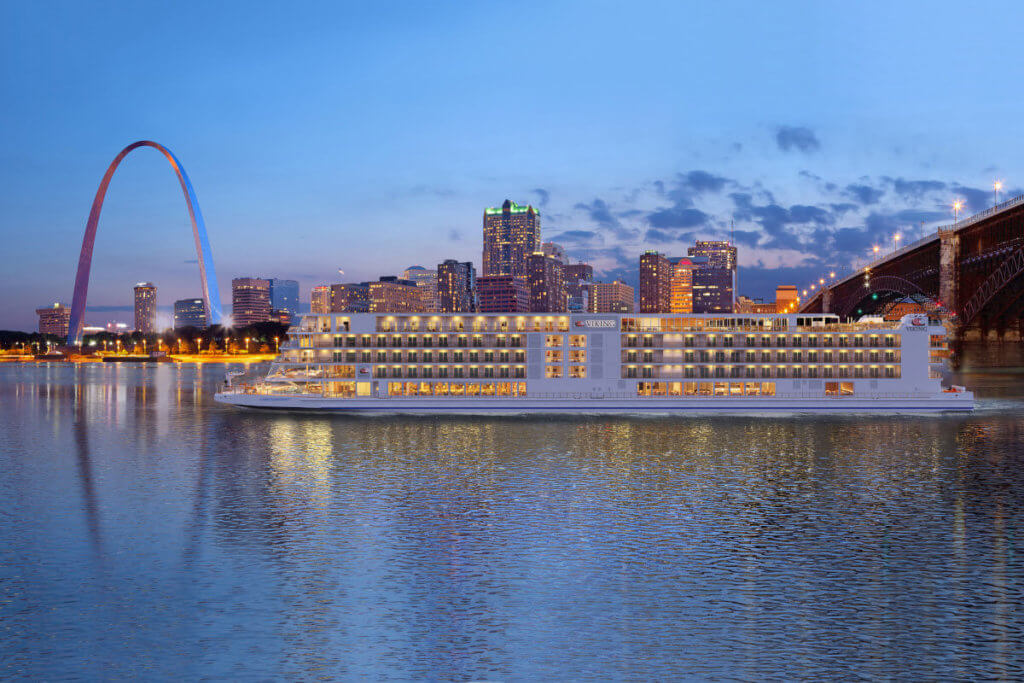At a glance
- Duration:
- 8 Days
- Start/End:
- Roundtrip New Orleans
- From:
- $3,499
- Time of Year:
- February, November - December

Embark on an 8-day adventure through New Orleans & Southern Charms along the mighty Mississippi River. Explore historic estates and significant Civil War landmarks while discovering the vibrant port cities of New Orleans and Baton Rouge, with their French-inspired charm. Feel the rhythm of Dixieland jazz, gospel, and blues, and indulge in a delicious array of Cajun, Creole, and Southern cuisine. Join us for an unforgettable journey and experience why the local Cajuns embrace the motto: “Laissez les bons temps rouler” (Let the good times roll).
Stretching 2,350 miles from Minnesota’s Lake Itasca to the Gulf of Mexico, our new Mississippi River cruises offer an exceptional way to explore America’s rich history and culture. This cross-country adventure is designed for the curious traveler, offering a deep immersion into the heart of the United States.
Step aboard the newest, most modern ship on the Mississippi, featuring all outside staterooms, private verandas, spacious public areas, and our signature Scandinavian design, thoughtfully reimagined for the river.
New Orleans & Southern Charms Details
Day-to-Day Itinerary
Day 1: New Orleans, Louisiana (USA)
Step aboard your ship and settle into your stateroom as you prepare to experience the lively spirit of New Orleans. Known as the birthplace of American jazz, this vibrant city radiates energy, especially along the balcony-lined Bourbon Street. In the heart of the French Quarter, the soulful sounds of jazz fill the air, particularly during the festive Mardi Gras season. Founded by French colonists in 1718, New Orleans once served as the territorial capital before the Louisiana Purchase in 1803. The iconic St. Louis Cathedral, named for King Louis IX of France, stands as the oldest cathedral in the U.S. The city’s rich blend of French, African, and other cultural influences creates a unique atmosphere, with tantalizing Creole cuisine that’s sure to delight.
Day 2: Darrow, Louisiana, United States
The Lower Mississippi region is home to a collection of historic mansions, with Darrow serving as the gateway to these grand estates, each meticulously preserved to honor the early history of Southern America. Here, stately homes stand alongside moss-draped oak trees and expansive farm fields, creating a picturesque riverscape. It’s easy to envision steamboats and other vessels once delivering goods to these grand doorsteps. Today, several of these properties are recognized as National Historic Landmarks, celebrated for their stunning architecture, lush landscaping, and the enduring legacy of those who cared for both the homes and the surrounding lands.
Day 3: St. Francisville, Louisiana, United States
St. Francisville, nestled along one of the most historic bluffs of the Mississippi, is home to more than 140 buildings listed on the National Register of Historic Places. The town is famously described as “two miles long and two yards wide,” a reflection of its origins on a narrow ridge that overlooks the river. Founded in 1809, it holds the distinction of being the oldest town in Louisiana’s Florida Parishes. Interestingly, many of St. Francisville’s historic buildings were relocated from Bayou Sara in the 1920s after the small settlement was ravaged by repeated flooding, preserving its heritage in a new location upriver.
Day 4: Natchez, Mississippi, United States
Natchez is home to one of the highest concentrations of historic Southern estates in the country, with over 200 impeccably preserved homes lining its streets. Established in 1716 by French colonists, it is the oldest city on the Mississippi, named after the Natchez tribe who once inhabited the area. Due to its prime location, the city became a cultural crossroads, blending Native American and European influences. Natchez was also the southern terminus of the Natchez Trace, an overland route to Nashville that helped traders bypass the powerful upriver currents. Today, the city exudes the charm of small-town America.
Day 5: Vicksburg, Mississippi
Perched on a high bluff where the Yazoo River meets the Mississippi, Vicksburg embodies Southern heritage and charm. Incorporated in 1825, the city’s strategic location on the river quickly made it a vital port. During the Civil War, Abraham Lincoln famously called it “the key to the South,” and it became the site of one of the war’s most crucial battles—the Battle of Vicksburg. Following the Confederate surrender to Ulysses S. Grant, the city’s fate was sealed. Today, the Vicksburg National Military Park preserves the rolling green fields and majestic monuments that mark the historic battle site.
Day 6: Baton Rouge, Louisiana
Baton Rouge, located on the eastern bank of the Mississippi, offers a vivid glimpse into the past. Its early prosperity was driven by its flood-free position on the first natural bluff north of The Delta. French explorer Pierre Le Moyne, Sieur d’Iberville, named the city after a red pole that marked the tribal hunting grounds in the area. The city’s rich cultural diversity is evident in its Cajun and Creole music, cuisine, and art, all reflecting the varied influences of those who have called Baton Rouge home throughout its history. The city is also home to the tallest state capitol building in the United States.
Day 7: New Orleans, Louisiana
Known as “The Big Easy,” New Orleans exudes charm and is famous for its warm Southern hospitality. With a rich musical heritage, the city hosts some of the finest jazz and blues performances nightly at its many historic venues. New Orleans is also home to the world’s oldest continuously operating streetcar line, and its four classic routes offer a convenient way to explore the city’s historic homes, lush parks, and fascinating museums, including the New Orleans Museum of Art and the National WWII Museum.
Day 8: New Orleans, Louisiana, United States
Say goodbye to your fellow travelers as you head home, or choose to extend your journey and explore more with one of our exciting extensions.




